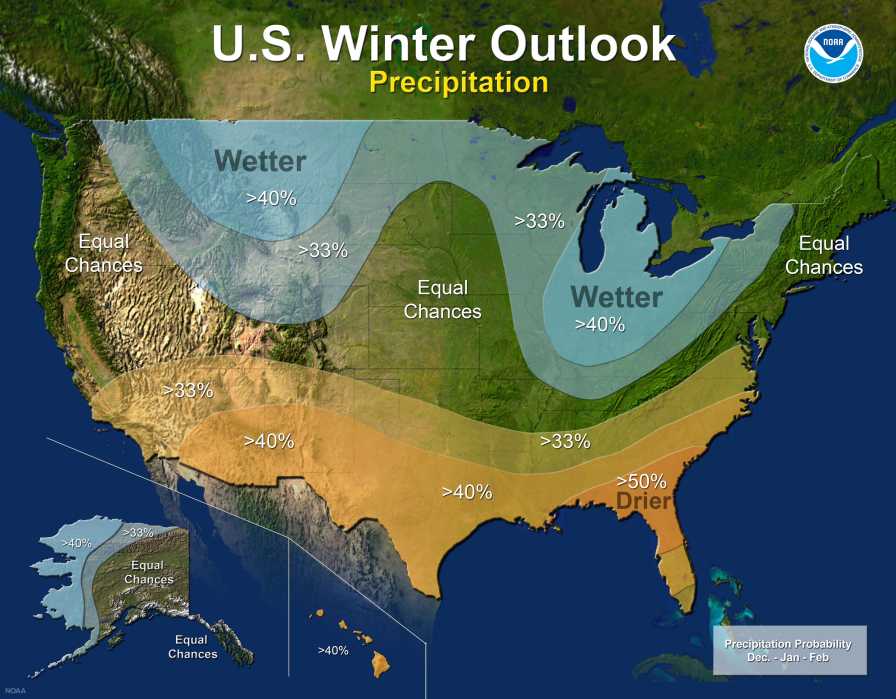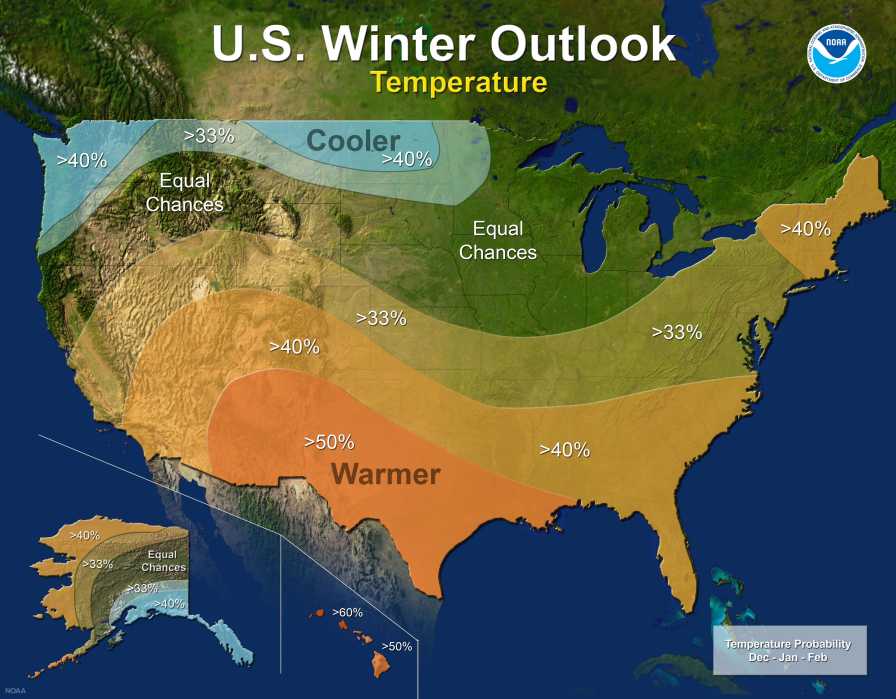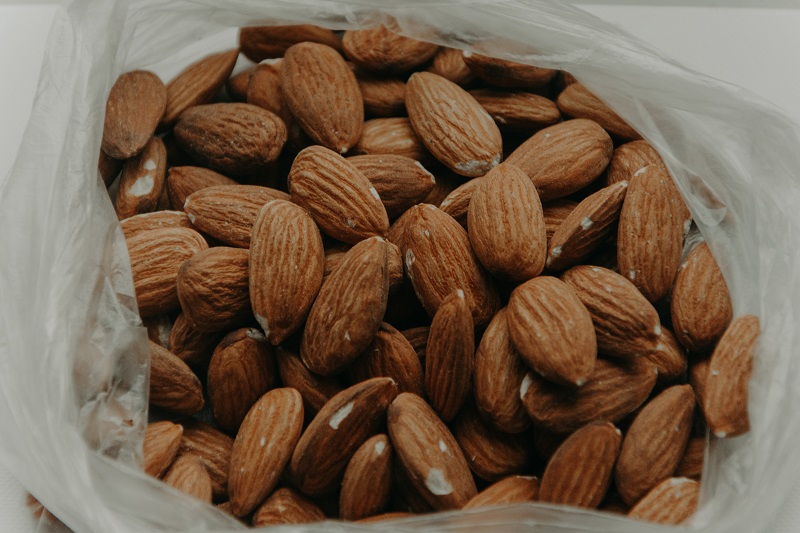What NOAA is Expecting Winter 2018 to Look Like
According to forecasters at NOAA’s Climate Prediction Center, the northern part of the U.S. could be in for a 2017-2018 winter that’s colder and wetter than normal, while the southern states might wind up high and dry.
Of course, a lot still depends on whether La Niña rears its head again. The influential climate phase, defined by a sustained cooling of sea surface temperatures in the equatorial Pacific, played a role in last season’s scenario. As of this posting, La Niña has a 55% to 65% chance of developing before winter sets in.
“If La Niña conditions develop, we predict it will be weak and potentially short-lived, but it could still shape the character of the upcoming winter,” stated Mike Halpert, Deputy Director of NOAA’s Climate Prediction Center. “Typical La Niña patterns during winter include above average precipitation and colder than average temperatures along the Northern Tier of the U.S. and below normal precipitation and drier conditions across the South.
So, you want the cold, hard truth? Here’s a summary of NOAA’s 2017-2018 U.S. Winter Outlook (December through February).

Precipitation
- Wetter-than-average conditions are favored across most of the northern U.S., extending from the northern Rockies, to the eastern Great Lakes, the Ohio Valley, Hawaii, as well as in western and northern Alaska.
- Drier-than-normal conditions are most likely across the entire southern U.S.

Temperature
- Warmer-than-normal conditions are most likely across the southern two-thirds of the continental U.S., along the East Coast, across Hawaii, and in western and northern Alaska.
- Below-average temperatures are favored along the northern tier of the country from Minnesota to the Pacific Northwest and in southeastern Alaska.
- The rest of the country falls into the equal chance category, which means they have an equal chance for above-, near-, or below-normal temperatures and/or precipitation because there is not a strong enough climate signal in these areas to shift the odds.
Drought
- Despite the outlook favoring above-average precipitation this winter, drought is likely to persist in parts of the northern plains, although improvement is anticipated farther west.
- Elsewhere, drought could develop across scattered areas of the south, mainly in regions that missed the rainfall associated with the active 2017 hurricane season.
The U.S. Winter Outlook will be updated on November 16.
Click here to find out what Winter 2019 might have in store.









